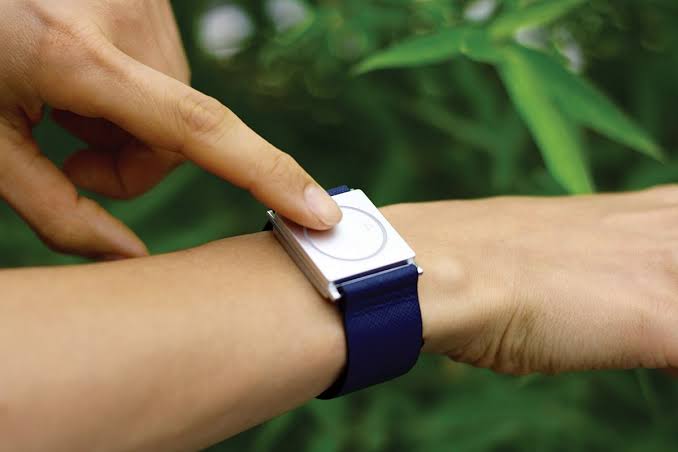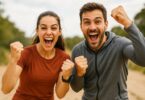What Are Seizure Alert Devices?
Seizure alert devices are electronic medical devices that can detect or predict seizures in people with certain medical conditions such as epilepsy. Although they cannot prevent epileptic seizures, they can notify caretakers and caregivers when an epileptic patient suffers a seizure.
Why Seizure Alert Devices Are Important
Epileptic seizures occur when the electrical activity of the brain is disturbed. These seizures can occur at any place and at any time.
Seizures are characterized by shaking, twitching, feelings of fear, repeated movements, confusion, and stiffness throughout the body, among other symptoms.
Seizures can be triggered by various events and activities including, but not limited to, lack of adequate sleep, chronic stress, missed medication, menstruation, and alcohol.
Seizures can occur while the epileptic patient is cooking, bathing, cycling, swimming, or even driving, and that can put the patient’s life in danger. Furthermore, a person can get a seizure that may last for more than five minutes. This can cause brain damage.
Additionally, a person with epilepsy may die suddenly due to a seizure. This is known as a sudden unexpected death in epilepsy (SUDEP), which often occurs during sleep.
Therefore, if the person living with epilepsy can quickly alert a friend, family member, co-worker, etc., when they have a seizure while they are alone, they can get help immediately.
The Different Types Of Seizure Alert Devices Currently Available
The types of seizure alert devices currently available on the market are motion devices. Some of them predict seizure-like activity by monitoring movements of the body, such as intense shaking in the arms or legs. Others can record sounds made by people with epilepsy and send alerts to their caregivers.
Three types of devices are available at the moment:
- Camera seizure alert devices
- Watch seizure alert devices
- Mattress seizure alert devices
Camera Seizure Alert Devices
These devices monitor the sleep of the person living with epilepsy. While the epileptic patient is sleeping, audio and video information from a remote video camera is relayed to an app on a smartphone (Android, iPhone, iPod Touch, etc.).
The app records and analyzes that information for any seizure-like activity. When a seizure-like movement is detected, an alarm sounds, and then a live sound and video from the camera follow. The sound and video are sent to the paired phone of the patient’s caregiver, so they can take action.
Watch And Phone Seizure Alert Devices
Some of these wearable devices are apps installed on certain companies’ smartwatches. When the watch detects repeated shaking movements similar to those that happen during epileptic seizures, it sends a signal to the app on the smartphone of the person with epilepsy. The app then sends phone calls and text messages to schoolmates, friends, family members, co-workers, etc.
Others are smart wristwatches that monitor the physical activity and rest of the person living with epilepsy and send data through a Bluetooth connection to the smartphone of the caregiver.
For this device to work effectively, the patient must stay within about 25 feet of the caregiver. When unusual movements resembling convulsive seizures are detected, a phone call or text message is sent to the caregiver’s phone.
Mattress Seizure Alert Devices
These devices can be positioned under any type of mattress. They have very sensitive microphones that can detect sounds made by a person with epilepsy. You can also adjust the level of sensitivity, so your body weight or the type of bed you sleep in does not affect its effectiveness.
When the epileptic patient makes convulsive-like movements, or when he groans, smacks his lips, or makes any other sounds repeatedly over a timed period, the device transmits an alarm via an installed radio transmitter to a pager to warn the person’s loved ones.
Portable Pulse Oximeters
These devices can be attached to a toe or fingertip. They monitor the percentage of oxygen in a person’s blood, as well as the person’s heart rate. Those are two vital signs that can give clues that a person is having a seizure. They can send alarms to warn caregivers of people who have seizures.
Mobile Apps
Various seizure alert mobile apps are also available. Some of them are compatible with iPhones and certain smartwatches. They monitor movements of the body similar to seizures, as well as changes in the heart rate.
When certain parameters are activated, the person’s emergency contacts saved on the app are automatically alerted so they can take the necessary action required. They also have help request buttons that send phone calls, text messages, emails, or a combination of those, to your loved ones.
Limitations Of Seizure Alert Devices
Although seizure alert devices can help people with epilepsy, there are many things they cannot do. Some of these things are:
- The person with epilepsy can only use them when he lives or shares living quarters with others.
- The devices detect only shaking movements and cannot detect focal impaired awareness (epileptic episodes in which the patient does not convulse but may only cry, laugh, freeze, or pick at the air, etc.).
- Some devices cannot notify caregivers of changes in heart rate or breathing difficulties; caregivers need to know two vital signs so they can alert doctors to prevent SUDEP.
- Most of the devices currently being sold on the market have not been approved by the US Food and Drug Administration (FDA). Evidence that those devices work comes from research done in either epilepsy monitoring units of certain hospitals or in certain homes.
What To Consider When Choosing A Seizure Alert Device
Step 1
Different types of devices can detect different types of seizures. Therefore the first thing you need to consider is to find out what type of device can detect the type of seizure you want to monitor.
Additionally, think about all situations that you are concerned about.
- Are you worried about having seizures at night while sleeping alone?
- Are you worried about your loved one getting seizures while cooking or driving?
- Are you worried about you or your family member having a seizure during the day while swimming?
Write down all these questions you have in your mind regarding those situations.
Talk to your epileptologist or neurologist about the type of seizure you want to monitor so you can be informed about the methods that may work best for you. And discuss your concerns with him.
Step 2
Ask yourself certain pertinent questions. Here are some of the important questions you may ask yourself.
Question 1: What Do I Want The Seizure Alert Device To Do For Me?
What is the main reason you want to buy the device?
- Do you want your friends and loved ones to know exactly where you are if you are alone during a seizure?
- Do you want to alert a friend or relative by email, text, or phone call when a seizure happens?
- Do you want a safety check during or after a seizure?
Question 2: Do I Live Alone, Or do I Live With Other People?
Some of the devices are most useful when you live alone. Others are helpful when you live with others.
- Do I live alone, or do I live with other people?
- Do I need internet access to be able to use this device?
- Does the device require a particular kind of smartphone to enable it to work?
- If I live alone and my caregiver lives somewhere else, how can the person check in with me?
Question 3: Can I Use The Device Only At Home?
Some devices can work properly in only one location, such as at home. Others work well even when moved around.
- So you may want to find out if the device is GPS enabled and can show where you are at any particular moment in time.
- Ask whether the device can send an alert to an emergency medical responder.
Question 4: What Are The Cons Of Using This Device?
- Find out if it is reliable and sensitive enough to pick up all the types of seizures that the person with epilepsy has.
- The device may give false alerts by detecting movements that are not seizures but which resemble seizures. Can you stop the alert from being sent if something of the sort occurs?
Question 5: Can The Device Prevent SUDEP Risk Factors Or SUDEP Itself?
Suppose the device is able to collect reliable data (when seizures occur and how many seizures occur) about your seizures. In that case, improving your seizure control will make it easier for you and your caregivers and doctors. Seizure control is one of the most effective ways to lower a person’s risk for SUDEP.
Question 6: Do I Want Other People To Have Access To Data From The Device?
- Ask whether sharing data from the device will be possible and how you can do this.
- Do you want only your family and doctors to see the data? Do you want researchers too to see the data?
- Find out if you can share data with many people using the device.
- Ask whether the device shares data in real-time or shares data at a later date.
- Find out what the manufacturer’s privacy protection policies are and how they will protect your privacy when your data is shared.
Question 7: How Much Will It Cost?
- You may want to find out whether you will have to pay a monthly or annual fee. Will you be given a full discount if you pay an annual fee?
- Additionally, you may want to know whether the cost of the device is covered by insurance. If it is, will you have to pay the full cost first and then get a reimbursement? Or will the manufacturer submit it to insurance?
- Ask about the device’s return and refund policy.
- Does a warranty cover the device? Will you continue to receive technical support after the warranty ends?
What Other Questions Should I Ask?
• Can anybody of any age use it?
• Can anybody of any weight use it?
• Do you have different sizes of this device?
• Does the device use electricity or a battery? If it is powered by a battery-powered, what is the battery life?
AUTHOR’S BIO:
With over ten years of experience in writing health and wellness articles, Isaac Nunoofio is an experienced health, wellness, and health tech writer. He is a Google-certified digital marketer, Content Marketing Institute-certified content marketer, and SEO expert. He helps bloggers, websites, and health and healthcare companies to create health content and gives others health tips at his Freelance Health Writer blog. You can also connect with him at https://www.linkedin.com/in/isaacnunoofio.








